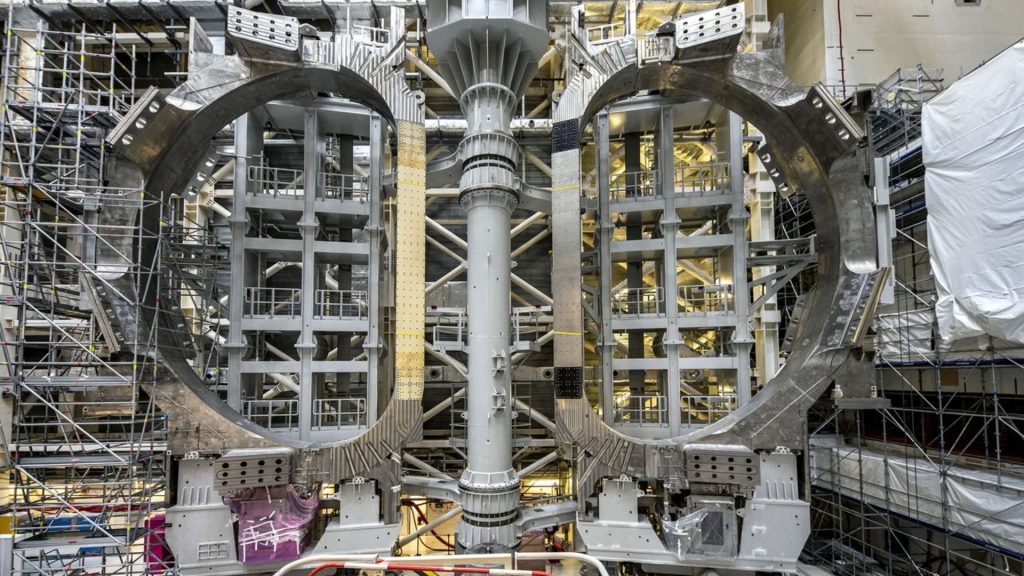US scientists find way to prevent runaway electron damage in fusion reactors – Interesting Engineering

Simulations showed that Alfvén waves can scatter runaway electrons, preventing damage.21 hours agoa day ago2 days ago2 days ago2 days ago2 days ago3 days ago3 days ago3 days ago3 days ago8 hours ago11 hours ago12 hours ago13 hours ago13 hours ago15 hours ago17 hours ago19 hours ago19 hours ago20 hours agoAman TripathiThis research could help ITER, the world’s largest fusion reactor being built in France, operate successfully.ITERScientists at the Princeton Plasma Physics Laboratory (PPPL) have used the Summit supercomputer at the Department of Energy’s Oak Ridge National Laboratory (ORNL) to simulate a potential solution to the problem of runaway electrons in fusion reactors.Fusion energy has long been hailed as the “holy grail” of clean energy. However, the problem of runaway electrons has been a major hurdle in realizing the nuclear fusion process.The latest simulations could be a massive step in this regard. It could pave the way for the successful operation of ITER, the world’s largest nuclear fusion reactor under construction in France.Runaway electrons are negatively charged particles that can be generated during fusion reactions. These electrons can be accelerated to high energies and can significantly damage the reactor walls and potentially derail the entire fusion process.“These electrons can possess as much as 100,000 times more energy than the bulk electron population, so the beam becomes highly energetic and can cause significant damage,” said Chang Liu, lead author of the study.The simulations on Summit showed that a type of electromagnetic wave, called an Alfvén wave, can scatter runaway electrons and prevent them from forming a damaging beam.Notably, the Alfvén wave is a ripple-like fluctuation in the magnetic field that permeates the plasma.The latest findings could lead to the development of new methods to control runaway electrons in fusion reactors. The waves disperse the electrons, reducing their energy and preventing them from causing harm.“It’s like clearing snow from the mountain slope to prevent an avalanche,” remarked Liu. “We hope to adapt this phenomenon into a solution that can help ITER.”The simulations were performed on Summit, which is one of the world’s fastest supercomputers. Summit is capable of more than 200 quadrillion calculations per second.“These simulations would have taken at least 30 times longer on a regular CPU-based machine,” Liu added.“This was the first model of its kind. Simulating these electrons is extremely difficult because we’re talking about a large number of particles — as many as a quintillion or more — moving near the speed of light.”The findings from the simulations align with the results of limited experiments at the DOE’s D-III National Fusion Facility.The next steps include incorporating other potential scenarios into the model. Liu said he’s working with experts at the Oak Ridge Leadership Computing Facility to optimize the code for Frontier, the successor to Summit. Frontier is capable of more than 1 quintillion calculations per second.“With the computational power and huge memory available with Frontier, we can include more particles and their interactions in the model and simulate the whole process in a much more realistic way,” Liu concluded.“We hope our work can help lead the way into a promising future of clean nuclear energy.”Since there are also several other challenges that need to be addressed for the successful realization of nuclear fusion, these findings could be crucial.Stay up-to-date on engineering, tech, space, and science news with The Blueprint.By clicking sign up, you confirm that you accept this site’s Terms of Use and Privacy PolicyAman Tripathi An active and versatile journalist and news editor. He has covered regular and breaking news for several leading publications and news media, including The Hindu, Economic Times, Tomorrow Makers, and many more. Aman holds expertise in politics, travel, and tech news, especially in AI, advanced algorithms, and blockchain, with a strong curiosity about all things that fall under science and tech.2 days ago2 days ago2 days ago2 days ago
Source: https://interestingengineering.com/energy/us-scientists-use-summit-for-fusion-reactors






